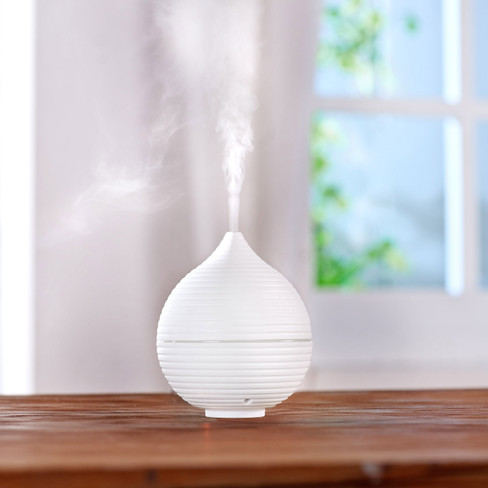
Do you know the difference between a diffuser, dehumidifier, and humidifier? Although all three perform a job function involving water, the three key differences between these household appliances include size, functionality, and how they perform.
What is a diffuser?
A diffuser is a device that disperses essential oils into the air. They are used to fragrance a room or provide aromatherapy benefits. Some popular essential oils in a diffuser include lavender, lemon, and peppermint. Diffusers are generally the smallest of the three appliances and can be easily transported from room to room. One of the main reasons diffusers are so popular is because they’re easy to use, relatively inexpensive, and can last for years.
Benefits of using a diffuser
By dispersing essential oils into the air, diffusers can help improve your mood, increase your energy level, and even promote better sleep, like the MELO Air Melatonin Diffuser. Additionally, diffusing essential oils can help kill bacteria and viruses in the air, making your home a healthier place to live.
How to use a diffuser
To use a diffuser, simply add water and a few drops of your favorite essential oil to the reservoir. Once it’s filled, turn on the diffuser and enjoy all the benefits of aromatherapy.
What is a humidifier?
A humidifier is an appliance that increases the amount of water in the air. Humidifiers are commonly used in winter when the air is dry, as increased humidity can help prevent dry skin, static electricity, and other common cold weather issues. Humidifiers come in various sizes and shapes, but they all work the same: adding moisture to the air.
Types of humidifiers
The most common type of humidifier is an evaporative humidifier, which uses a wick to absorb water from a reservoir and then releases it into the air. Evaporative humidifiers are beneficial because they help remove excess air pollutants. They also tend to be less expensive than the other types and are easy to maintain.
Other common types are ultrasonic humidifiers, which use vibrations to create a fine mist, and impeller humidifiers, which use a rotating disc to fling water into the air. Adding moisture to the air, both improve air quality and reduce the dust and other allergens in the air.
How to use a humidifier
To use a humidifier, fill the reservoir with water and turn it on. Some humidifiers have an automatic setting that will turn the humidifier on and off as needed, while others require you to adjust the humidity level manually.
What is a dehumidifier?
A dehumidifier is an electrical appliance designed to do the exact opposite of a humidifier: reduce the air’s humidity level.
Benefits of using a dehumidifier
Dehumidifiers are often used in homes and offices to remove musty odors and prevent mold and mildew growth. Mold and mildew are dangerous because they can cause respiratory problems, especially in young children and the elderly. Additionally, mold and mildew can damage furniture, walls, and other belongings.
How to use a dehumidifier
Dehumidifiers draw in air from the room and pass it over a cold coil. As the air passes over the coil, the water in the air condenses and is collected in a reservoir. Once the reservoir is full, many makes of dehumidifiers will automatically turn off. To empty the water, simply pour it down the drain.
Deciding which one you need
Diffusers are most effective when used in small spaces, such as a bathroom or bedroom. It may take longer to notice the effects of the essential oils in a larger area. Humidifiers and dehumidifiers, on the other hand, can be used in any size room.
Final Thoughts
Diffusers, humidifiers, and dehumidifiers are all great appliances to have in your home. Each has unique benefits that can help improve your overall health and well-being. To get the most out of your diffuser, humidifier, or dehumidifier, follow the manufacturer’s instructions and only use these devices as directed. You can enjoy the benefits of the MELO Air products offered with proper care and use.
Understanding the differences between diffusers, humidifiers, and dehumidifiers is essential for creating a comfortable and healthy indoor environment. Each of these devices serves a unique purpose, whether it be enhancing air quality, adjusting moisture levels, or distributing essential oils. However, maintaining optimal humidity levels is crucial, not just for comfort but also to prevent issues such as mold growth. In environments where humidity is not properly managed, the risk of mold infestation increases significantly. It’s advised to conduct regular checks and, if necessary, professional mold clearance testing to ensure that your space remains safe and health-conducive. If you wish to ensure the well-being of your indoor spaces and prevent mold-related issues, feel free to find out more about comprehensive strategies and services available.